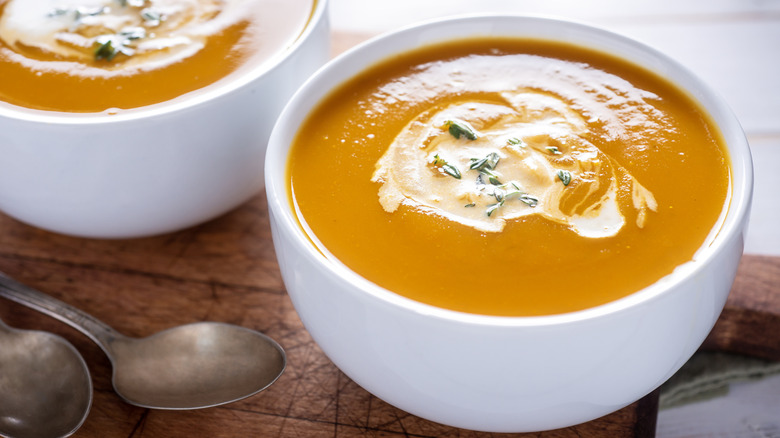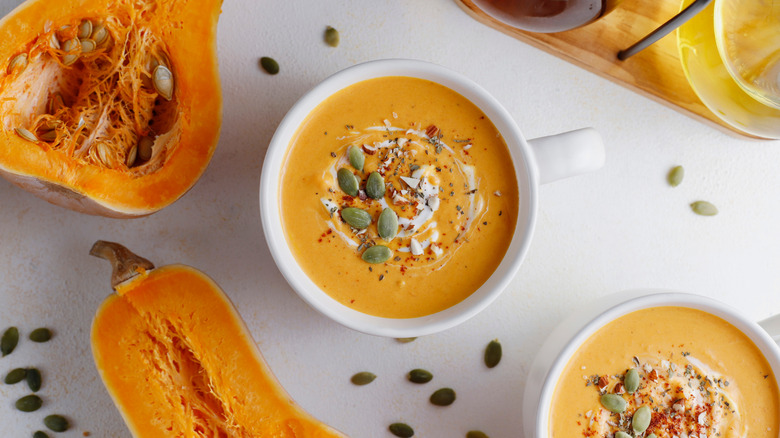The Toasted Topping Your Butternut Squash Soup Deserves
Fall foods are all about comfort. While apple pies, Thanksgiving-ready turkeys, and seasonal veggie roasts are grounding, familiar dishes, an autumnal menu isn't complete without butternut squash soup. Creamy, sweet, and earthy, a plain Jane butternut squash soup is already perfect, but why not give it a crown to celebrate its status as one of the finest fall foods in the game? We're not talking about Tudor-style emerald-crusted tiaras. Instead, we're talking about a garnish that's as homey, humble, and rustic as the soup itself: Enter roasted pumpkin seeds.
Raw pumpkin seeds are good, but when roasted, they transform from ordinary to extraordinary with minimal work. Roasting pumpkin seeds activates the Maillard reaction, a chemical reaction that occurs between a food's amino acids and sugars, facilitating browning and a deeper and more complex flavor. Introducing roasted pumpkin seeds to butternut squash soup gives the first layer of the dish a toasty, caramelized flavor that's complemented by its butterscotch bravado. Similarly, the crunchy texture of the seeds will enhance the soup and diversify its silky smooth consistency for a more interesting mouthfeel. Plus, pumpkins are synonymous with fall, making it not only a flavorful addition to butternut squash soup, but an apt one to boot.
Best ways to roast pumpkin seeds
Adding roasted pumpkin seeds to butternut squash soup is as easy as pie. However, even simple kitchen tasks come with guidelines, so consider the various forms of seed roasting before you start making your soup.
The most classic method for roasting pumpkin seeds is by way of the oven. A hands-free approach that allows you to move freely around the kitchen, oven-roasting pumpkin seeds is as easy as spreading them in an even layer across a baking sheet and roasting at around 350 degrees Fahrenheit until they're golden brown. For a similar but much quicker roasting method, try air-frying pumpkin seeds. Air fryers work twice as fast as conventional ovens and give you the same results. Another option is to roast pumpkin seeds on your stovetop by sauteeing them over medium heat until they develop that perfect caramel color.
Because pumpkin seeds are teeming with their own fatty oils, there's no need to add cooking oil to pumpkin seeds before roasting them, regardless of which cooking method you choose. However, if you want to dress the seeds up with flavors, a fat source is necessary to bind seasonings to the seeds' surface. Coat them in oil, butter, or egg whites, and experiment with spices like smoked paprika, cumin, brown sugar, nutmeg, or ginger.

